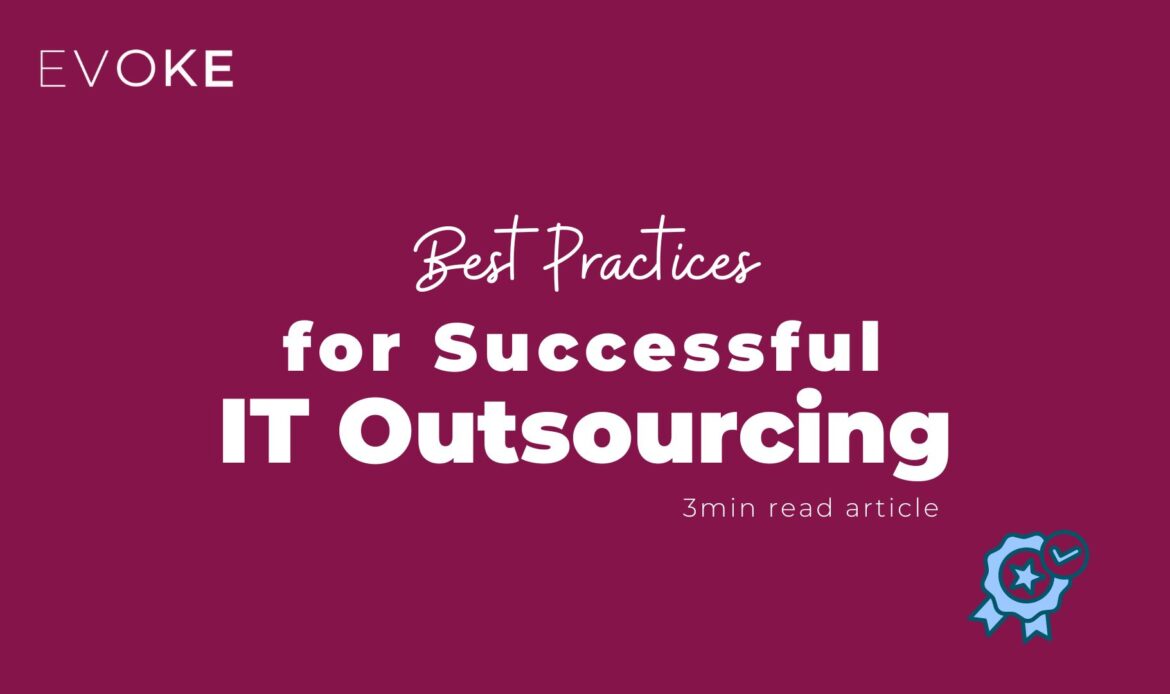In today’s rapidly evolving business landscape, companies face the dual challenge of staying competitive while managing increasingly complex IT requirements.
In response, many organizations are turning to IT outsourcing as a strategic solution. IT outsourcing involves delegating specific IT functions or processes to external service providers, allowing businesses to access specialized expertise, reduce costs, and focus on core business activities. This approach has become increasingly prevalent due to its ability to provide scalable and flexible solutions tailored to the unique needs of each organization.
☑️In this article, we will delve into the best practices for IT outsourcing, exploring how businesses can optimize its benefits while mitigating risks and fostering a positive and productive relationship with their outsourcing partners.
1.Start with a pilot project: 🚀
*Pilot projects are a great way to assess the viability of an idea, test the process, and ultimately see if a full-scale project is viable.
-Before fully committing to outsourcing your entire IT function, consider starting with a small-scale pilot project. This allows you to test the waters and evaluate the outsourcing partner’s capabilities, communication, and responsiveness.
-Choose a pilot project that is relatively low-risk but still representative of the type of work you intend to outsource. This could be software development for a new feature, IT support for a specific department, or infrastructure management for a non-critical system.
-Establish clear objectives, timelines, and success criteria for the pilot project. This will help you measure the outsourcing partner’s performance and determine whether they are a good fit for your long-term outsourcing needs.
2.Build a strong relationship with the outsourcing partner:🤝
–Communication is key to a successful outsourcing relationship. Establish open and transparent communication channels from the outset, including regular meetings, status updates, and project reviews.
-Foster a collaborative mindset by treating the outsourcing partner as an extension of your internal team rather than a separate entity. Encourage knowledge sharing, idea exchange, and joint problem-solving.
-Invest time and effort in building trust and rapport with the outsourcing partner. This includes getting to know their team members, understanding their processes and workflows, and addressing any concerns or issues proactively.
3.Continuous evaluation and improvement:📈
-Outsourcing is not a one-time transaction but an ongoing partnership. Regularly evaluate the performance of the outsourcing partner against predefined metrics, such as quality of work, adherence to deadlines, and customer satisfaction.
-Solicit feedback from internal stakeholders, such as project managers, developers, and end-users, to identify areas for improvement and address any pain points or bottlenecks in the outsourcing process.
-Be proactive in addressing issues as they arise and don’t hesitate to make course corrections or adjustments to the outsourcing arrangement if necessary. Continuous improvement is essential for maximizing the value and effectiveness of IT outsourcing.
🎯By following these best practices, businesses can set the key difference between who’s the best partner , build the right approach for their objectives and build a powerful partnership.

